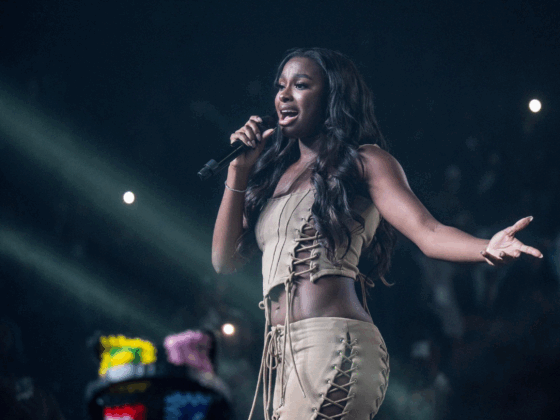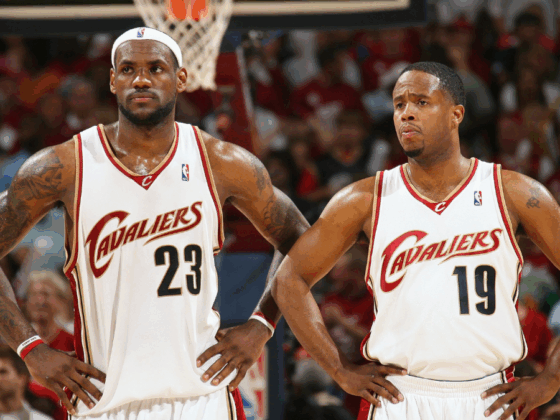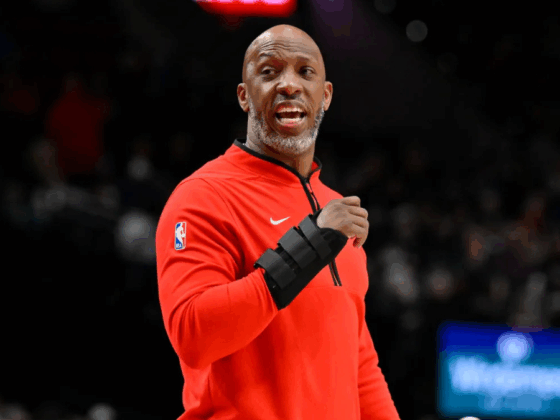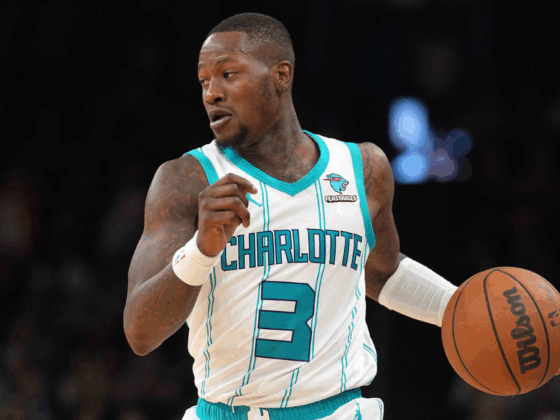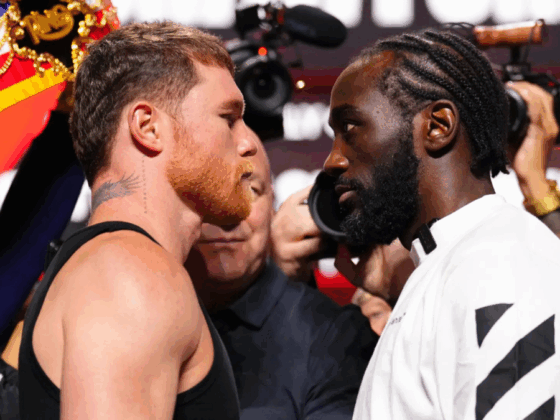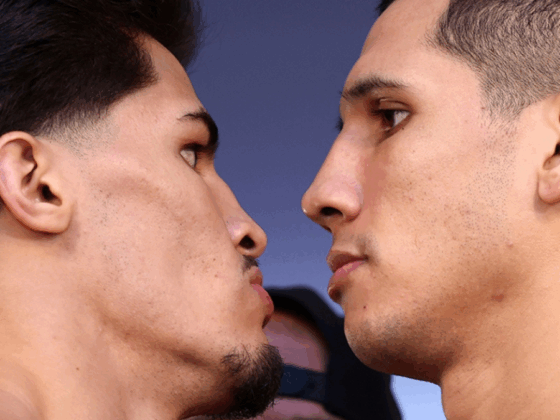
Synonymous with “snitch,” D’Angelo Russell spent his days as a Los Angeles Laker largely an outcast. He put up per-36 scoring numbers rivaling the early years of Russell Westbrook, and yet nobody took him seriously. It became clear the Lakers did not want him to be a part of their future, and he was sent away to Brooklyn in a salary dump trade in late June, adding more insult to Russell on his way out of LA. Now, he has a Lonzo-Ball-sized chip on his shoulder as he heads to the Nets for the second chapter of his career.
In fact, even that may undersell how large the shoulder chip is. He scored 19.6 points per 36 minutes before he could legally drink and got traded away for one season of Brook Lopez and the 27th pick in the draft. That has to be insulting. How many 20-year-olds can catch the ball on the break, spin around Jaylen Brown, cross over Amir Johnson, put two moves on Jae Crowder and finish at the rim? Not many, but that sequence happened:
Those are veteran handles from a young kid. Point guards with usage rates in the mid-20s before they enter their third seasons, like D-Lo, tend to take a huge leap in scoring in their 3rd season. This happened to 3 current franchise icons: Russell Westbrook, John Wall, and Chris Paul. D’Angelo Russell fits that criteria and looks to be in line for a nice jump in production with his new team next year.
The Nets have a roster that will allow “D’Loading” to be all he can be on offense. His 26.6 percent usage from 2016-17 would have been the second highest on Brooklyn behind Brook Lopez, who is now gone. That suggests DAR will be given ample opportunity to handle the rock and create offense for himself and others.
With the inclusion of Allen Crabbe and DeMarre Carroll, two guys with over 36 percent shooting career shooting from deep, the Nets have multiple serviceable three-point shooters. That will give Russell the space he needs to get to his spot and put the ball in the bucket. With the floor spacing Russell had on this possession, he had no problem getting to the rim for an open layup, even with the long-armed Giannis guarding him:
And it’s not just layups. When the floor opens up, D’Angelo can get up mid-range shots and knock them down. He shot 46.5 percent from three to 10 feet from the basket, and it was clear that he had an affinity for pulling up from this distance. He took around two of these shots every night, and even with the Lakers less than stellar spacing, he could still hit them:
With the added space he will have in Brooklyn, he should be able to improve his shooting percentage from 3-10 feet, and thus be a more effective scorer.
Look back at that clip you just saw. Did you see Russell have success using the handoff from Julius Randle to get open? Per NBA Math’s player play-type profiles, Russell ranked in the 79th percentile on handoff plays last season. Big bodies freed him up on the perimeter frequently and there is a reason to believe that trend can carry over to Brooklyn. Trevor Booker, Quincy Acy, Tyler Zeller, Jarrett Allen and Timofey Mozgov are all big men who should be able to set up Russell for handoffs like Randle does again here:
Almost all of the things D’Angelo Russell does well seem to be replicable in Brooklyn and many of his strengths may even be improved with the extra space he will have on the floor.
And we haven’t even gotten to the aforementioned Mozgov. When the big man shared the floor with Russell, the Lakers had an even net rating. When D’Angelo played without Mozgov, that net rating fell all the way to -13.6. The duo had great screen chemistry and Mozgov often freed up Russell for shots using his girth:
That screen connection will be back in Brooklyn and will be an integral part of the Nets’ offense when these guys share the floor. Considering the only other Nets centers are Tyler Zeller and rookie Jarrett Allen, Mozgov and Russell should share the floor frequently, so expect to see this screen chemistry continue this season.
Like all players, D’Angelo has flaws. His defense is clearly the most glaring. His career-high defensive box plus/minus is -1.6 and he has averaged 150 percent more fouls per game than steals per game in both of his seasons as a pro. He can’t stay in front of anyone and it often killed any chance the Lakers had of stopping the opponent:
Kemba cooks him easily, with no screen or any action to get him open.
And his attention to detail off-ball is pretty lackluster. Here, Mike Conley simply runs by him and receives the pass for a bucket:
These are fixable mistakes and ones you would like to see Russell get rid of completely. Thankfully, his new team offers him hope in the form of its new head coach.
Kenny Atkinson was able to tap into his point guard rotation and get them to lock in on defense in his only year as the Nets head coach. Spencer Dinwiddie posted his best DBPM by 1.3 points in his only season under Atkinson. Starter Jeremy Lin posted his highest steals per game since 2012 and had his second best defensive rating in the same span. Rookie Isaiah Whitehead had the team’s 7th-best DBPM, and rookie point guards tend to struggle on defense.
All this to say: Atkinson helped improve the defensive capabilities of every point guard he had. Why would Russell break the trend? He has the athleticism to stay in front of his matchup; he just needs to be smarter and give a bit more effort on that end of the floor. Atkinson should be able to get him to do both of those things.
So basically, Russell will have more room to accentuate his strengths on offense and a coach that will help him improve his effectiveness on defense. You can bet Russell is eager to prove to the city of Brooklyn, and Los Angeles, exactly how good he can be. With all these factors in play, expect to see D’Angelo Russell dominating opponents in Brooklyn this year.
